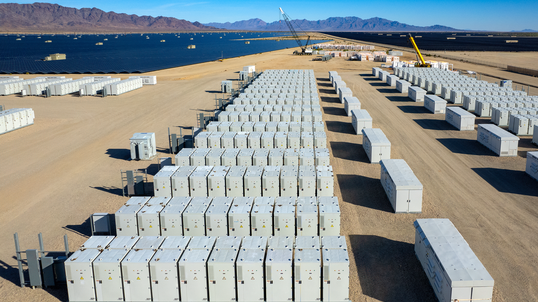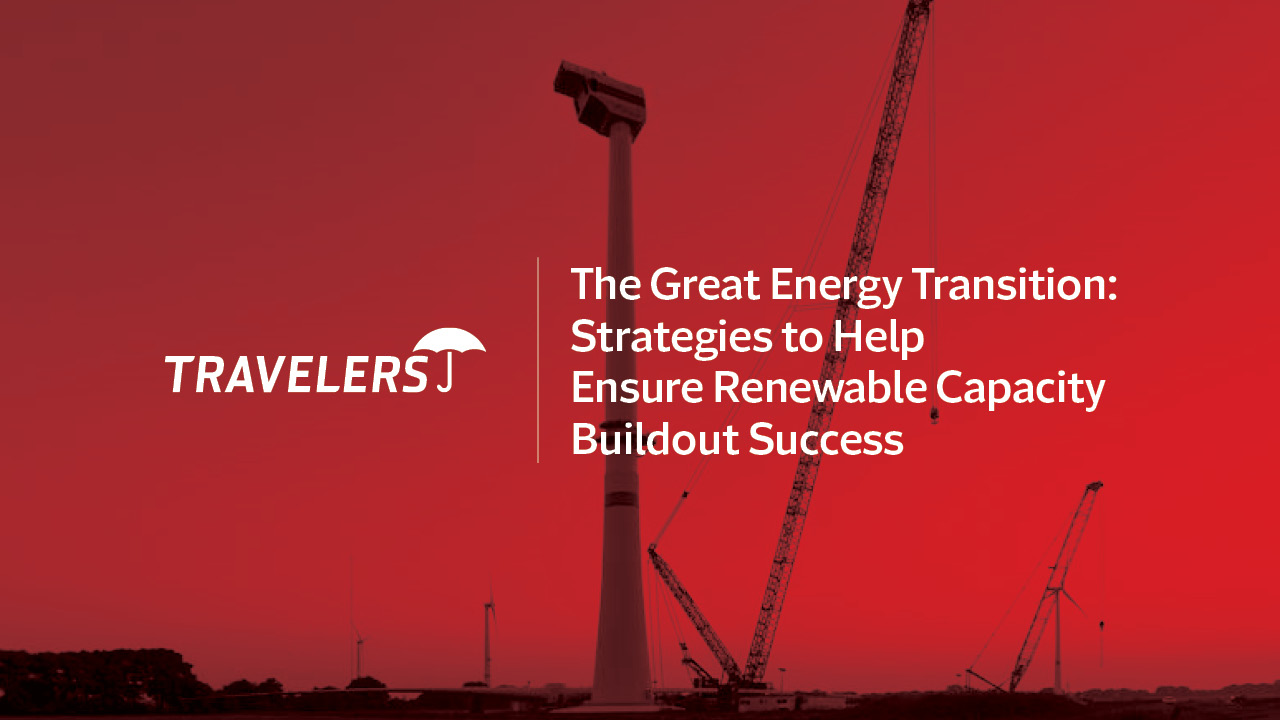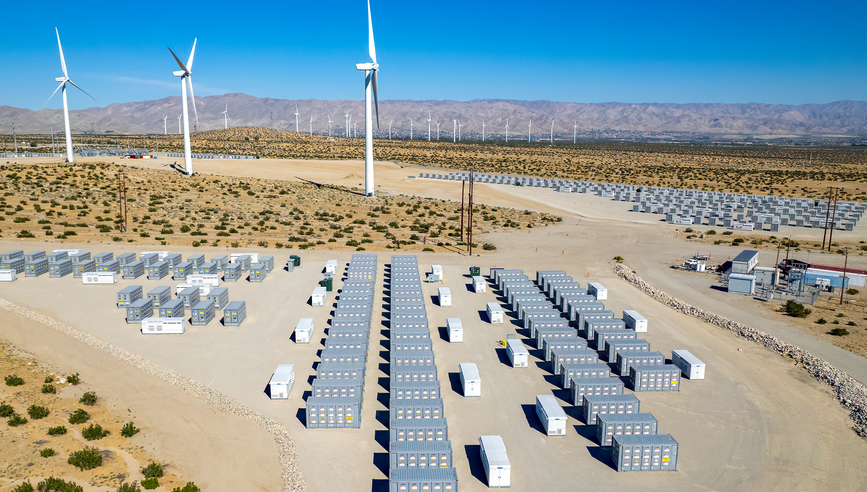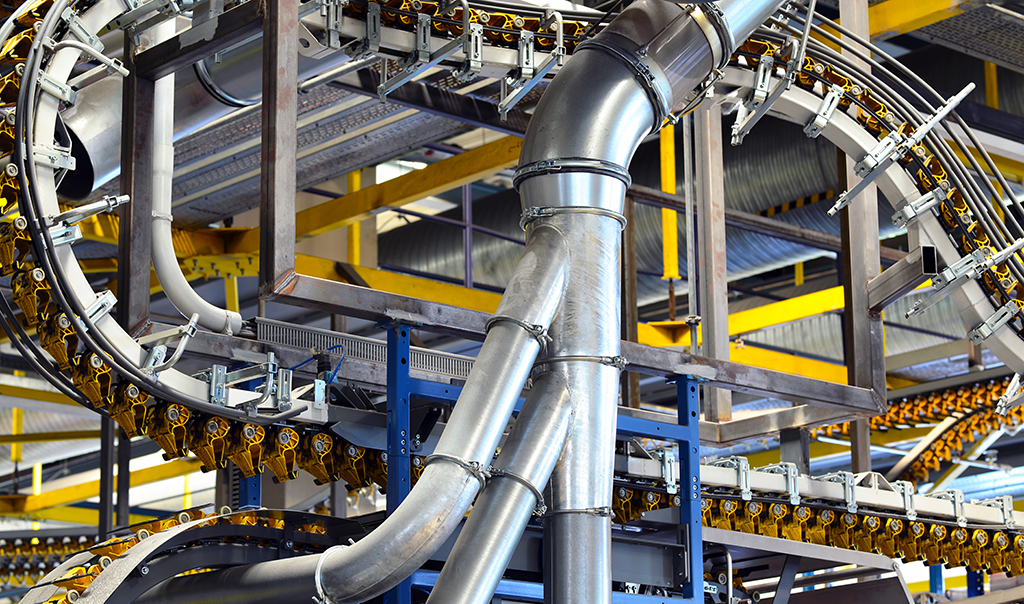Go Green Wisely: Mitigate Battery Storage Equipment Breakdowns

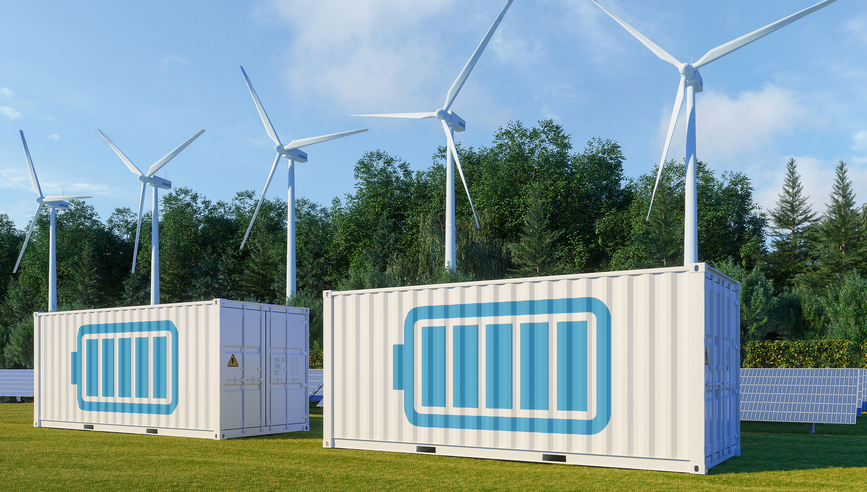
To meet legislative requirements, earn incentives and reduce fossil fuel dependency, many organizations across the U.S. are taking a multifaceted approach to their environmental sustainability strategies. As they pursue initiatives to reduce their carbon footprint, transitioning to green energy options to source electricity is a common course for businesses.
While renewables promise to improve how energy is sustainably produced and stored, they bring new challenges – including risks related to equipment breakdown.
Battery energy storage systems: Reap the rewards by avoiding the risks.
Organizations of all sizes increasingly turn to renewable energy sources like wind and solar for their electricity needs. However, relying on these relatively newer energy resources requires different risk mitigation tactics than ones used for legacy means like gas and oil. Solar power is abundant during the day, when demand is lower, while wind power is inconsistent. To address this mismatch between energy supply and demand, many are looking to battery energy storage systems (BESS). BESS technology has been around for some time. But lately its popularity is rapidly increasing. In fact, megawatt capacity from solar installations with co-located battery storage systems is growing faster than capacity from stand-alone solar installations, wind and fossil fuel combined.1
Battery energy storage systems are propelling the proliferation of renewable energy systems. These BESS store excess energy during times of high production, making it accessible for use during emergencies, peak demand and times of low production.
Large-scale battery storage capacity on the nation’s grids was about 9,000 MW in 2022. New capacity planned for 2024 takes the U.S. above 30,000 MW in large-scale battery storage. The biggest growth is happening in Texas, California and Arizona.2
“While utility-scale BESS accounts for the majority of the growth we’ve seen in storage capacity, small-scale is also increasing, with manufacturers leading the way in installing small-scale BESS on-site,” said Greg McRae, AVP Claim, Boiler & Machinery at Travelers.
Likewise, BESS is increasingly being used for residential purposes. “With residential equipment breakdown coverage available from Travelers, we’re paying close attention to the increasing number of residential BESS installations due primarily to electric vehicle purchases or the addition of whole-home backup electrical power systems,” said McRae.
Power producers that want to reach maximum efficiency will likely need to add battery storage to their renewable energy installations. In doing so, they may qualify for tax credits for installing both stand-alone energy storage systems and solar-plus-storage systems. State governments are also promoting the pairing of energy storage with solar power installations.
According to a recent report by the Solar Energy Industries Association, demand for BESS in the U.S. will grow more than sixfold by 2030.3 Storage for excess power is so important that the U.S. Department of Energy awarded funding to the Interstate Renewable Energy Council (IREC) to address stand-alone energy storage and solar-plus-storage interconnection. IREC assembled a multidisciplinary team to form the Building a Technically Reliable Interconnection Evolution for Storage (BATRIES) project.

It’s clear to me that growth in wind and solar across sectors and applications, paired with government incentives for on-site energy storage, will continue to drive growth in battery energy storage capacity. This means there is an increasing growth in exposure to equipment breakdown loss.
- Greg McRae, AVP Claim, Boiler & Machinery at Travelers
The Achilles' heel of battery storage is equipment breakdown.
The likelihood of the actual battery cells being the direct cause of a breakdown to covered equipment or covered property is not high, according to McRae. Instead, the primary breakdown exposure factor in a BESS installation is similar to that of any other electrical generation or storage risk. This includes problems with the electrical distribution equipment such as switchgear (breakers, switches, fuses, reclosers and relays), electrical cables, busways or bus ducts, and transformers. These components are more likely to be the source of a breakdown.
Another critical breakdown exposure in a BESS installation is the cooling (HVAC) system used in any given container. A loss of electrical power to a site will likely necessitate the rental of electrical power generation equipment and/or HVAC equipment until repairs are complete. Consequently, this type of occupancy could lead to significant losses for the insured, both in terms of business income interruption due to the inability to supply power for sales and extra expense due to the cost of renting equipment needed to maintain stable environmental conditions.
It is also important to be cautious with BESS installations within existing electrical distribution systems. Before installing a BESS, existing electrical systems should be fully evaluated by and receive a clean bill of health from an electrical engineering expert. Routine inspections and proactive maintenance that complies with manufacturers’ recommendations are crucial for helping prevent breakdowns and mitigating risks.
When batteries are damaged, they can still contain energy, known as “stranded” energy, which should be dissipated prior to any interaction or removal of the storage cells. Stranded energy poses a risk of reignition. Additionally, the time required to dissipate this energy could have a negative impact on business income and/or create delay-in-start-up costs. If not handled properly, damaged batteries could cause further damage and injury, including electrical shock.
Common BESS equipment breakdown risks include:
- Prototypical (not yet proved) technology.
- Faults in balance-of-plant equipment, e.g., transformers, switchgear and circuit breakers.
- Electrical component failures in the battery management system (BMS), e.g., sensors, processors or other components that disrupt critical functions like temperature control and cell balancing.
- Cooling and ventilation system breakdowns.
The secret weapon is regular maintenance.
“In the rapidly evolving world of renewable energy, solving the energy storage challenge has emerged as a key need. These systems require regular and meticulous maintenance to ensure optimal performance and longevity,” said McRae. He added, “Regular inspections and maintenance can help prevent breakdowns, extend the lifespan of equipment and maximize return on investment.”
For renewable installations that include a battery storage system, it is essential to perform routine checks and maintenance on the batteries. This process begins at the time of installation. It is crucial to hire a contractor who is not only skilled in electrical work but also has specific experience with BESS.
This includes:
- Monitoring the battery voltage and state of charge.
- Checking for any signs of corrosion or moisture intrusion.
- Having a current practiced reaction plan to respond immediately to abnormal conditions (alarms/warning indicators).
- Install on-site or pre-connection points available to install a rental engine/generator set to power the BESS’s HVAC system if utility supplied power source becomes
- Ensuring the batteries are operating at the correct temperature.
McRae emphasized that these tasks should be performed by qualified technicians, following manufacturer-recommended procedures and safety practices.
Optimize risk management with equipment breakdown insurance for battery storage systems.
Technological advances in clean energy, including evolving storage solutions, help organizations reach their renewable energy targets. Taking a proactive approach to both monitoring and maintaining your renewable energy and battery storage equipment can go a long way toward helping to prevent equipment breakdown and the loss of productivity and revenue that may result.
Learn more about protecting your machinery and equipment with equipment breakdown insurance from Travelers.
Sources:
1,2 https://www.eia.gov/analysis/studies/electricity/batterystorage/
3 www.seia.org/news/new-report-charts-path-american-made-energy-storage-future
